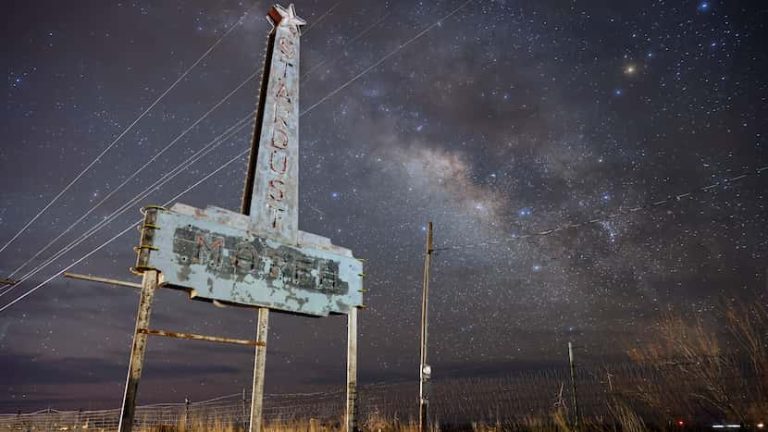A likely once-in-a-lifetime “Blaze Star” will be visible to the naked eye in the D-FW night sky between now and September.
Despite its name, Blaze Star is actually made up of two companion stars (a white dwarf and a red giant) located about 3,000 light-years away in the constellation Corona Borealis. The two stars are known to scientists as a binary star system and are called T Corona Borealis.
About every 80 years, T coronae grows up to 1,700 times more luminous, making it roughly as bright as the North Star, said Philip Anderson, director of the William B. Hanson Space Science Center at the University of Texas at Dallas. This phenomenon is called a recurrent nova, and there are about 10 known recurrent novae in the Milky Way.
As stars like our sun age over billions of years, burning up all the hydrogen they can for fuel, eventually becoming extremely hot and dense remnants called white dwarfs. The white dwarf T Corona Borealis uses its immense gravity to suck hydrogen from nearby red giants, larger, cooler stars that are nearing the end of their lives.
“The white dwarf is building up a layer of hydrogen and it’s getting hotter and hotter,” Anderson says. “Eventually it gets to a point where hydrogen fusion starts in an explosion.”
Explosions release brilliant flashes of light that we see as twinkling stars, and this cycle repeats many times during the life of a star system, which makes it different from a supernova, which is a massive explosion that results in the death of a star.
According to NASA, the first recorded sighting of the Blaze Star was made in 1217 by a German monk who described it as “a faint star that emitted a strong light for a short time.” Other instances of the phenomenon observed from Earth were in 1787, 1866, and most recently in 1946.
By comparing the star system’s current brightness to observations from 1946 and 1866, scientists expect T Corona Borealis to shine brighter within the next two months, Anderson said.
North Texas residents can see T Corona Borealis at night by finding the constellation Corona Borealis, which lies between the constellations Hercules and Bootes. Anderson recommends using a stargazing app like Star Walk as a guide.
“My recommendation is to get used to going out at night every once in a while and looking for Boötes, Hercules, Corona Borealis and Alphecca,” he says. “Find a place where you think you’ll see the stars, and one day you’ll think, ‘Oh, there’s a star I’ve never seen before.'”
Alternatively, try observing the sky just after sunset, about 15 degrees above the horizon.
Once T Coronae Borealis explodes, its brightness will only last for a short time — less than a week — but it will provide scientists with a unique opportunity to better understand recurrent novae, Anderson said.
“We’re watching the evolution of a star. … It’s amazing that we can watch this in real time during our lifetimes,” he said.
Miriam Fawzia is a science reporting fellow at The Dallas Morning News. Her fellowship is supported by the University of Texas at Dallas. All editorial decisions are made by the Dallas Morning News.

